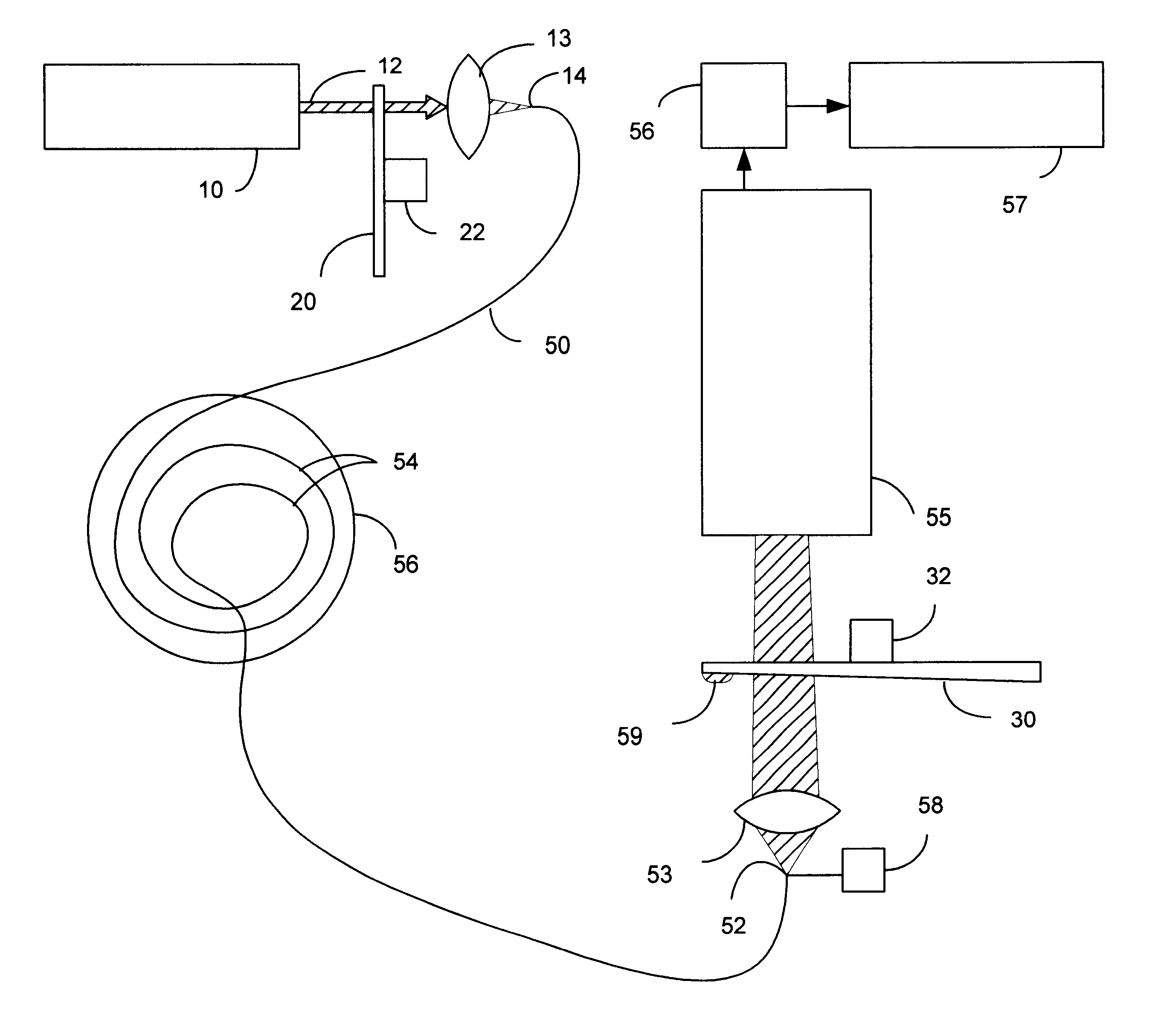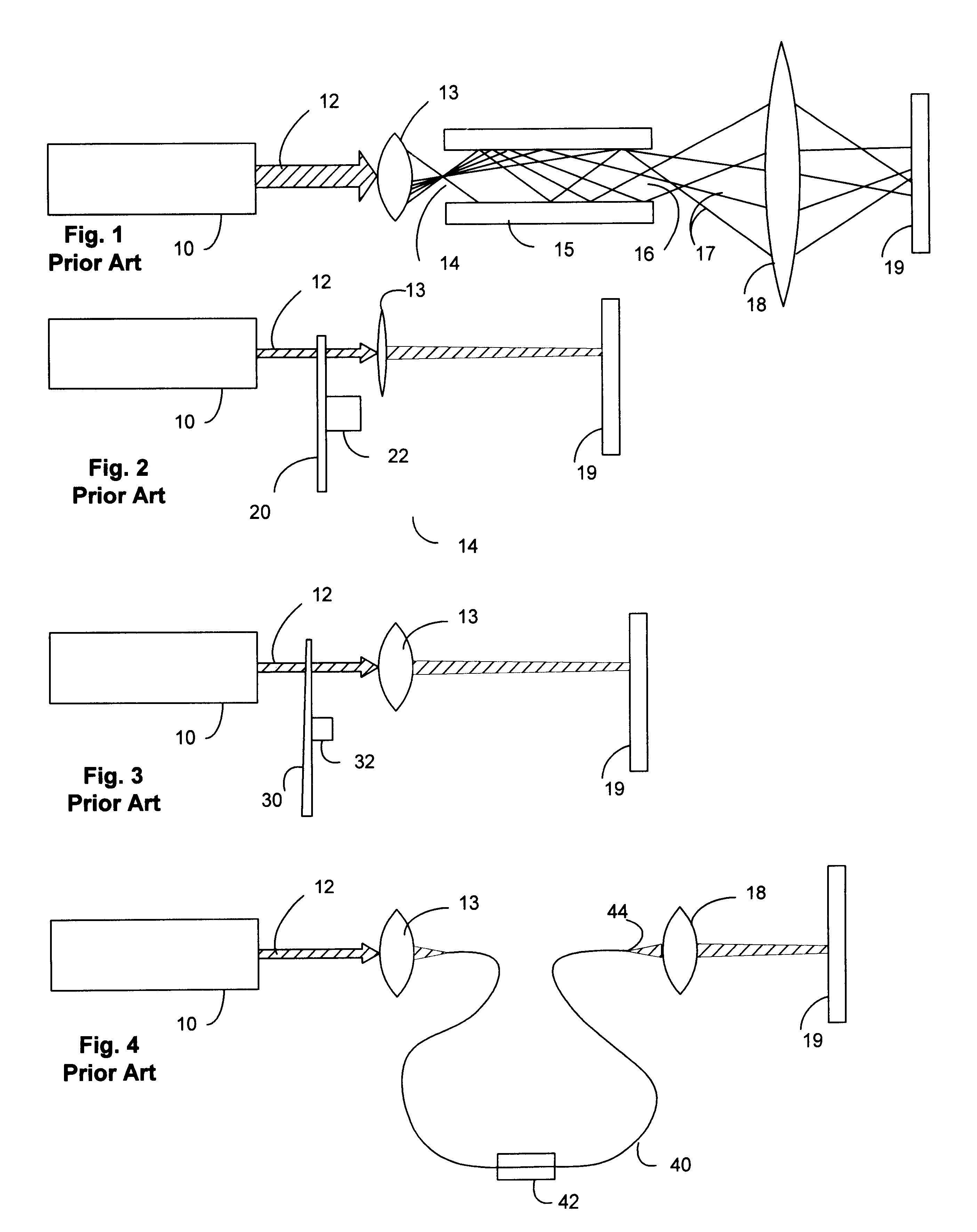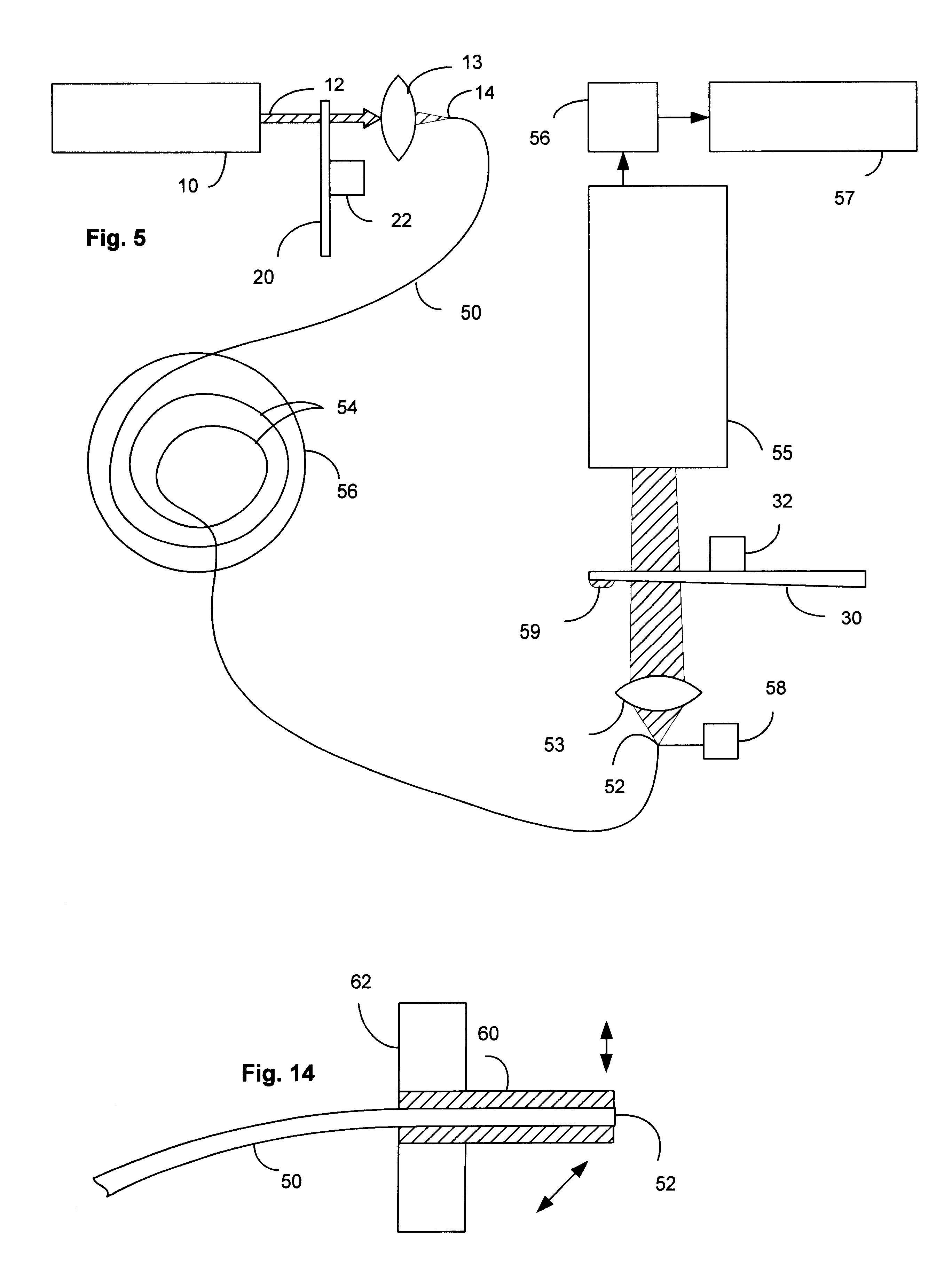Laser beam homogenizer
a laser light and beam technology, applied in waveguides, condensers, instruments, etc., can solve the problems of large scale inhomogeneity, insufficient beam homogeneity and coherence properties, and insufficient beam homogeneity for precise lithographic and microscopic work, etc., to shorten the duration, reduce the time, and increase the efficiency
- Summary
- Abstract
- Description
- Claims
- Application Information
AI Technical Summary
Benefits of technology
Problems solved by technology
Method used
Image
Examples
Embodiment Construction
A suitable light intensity for the microscope is the CW Argon-ion laser, one capable of producing one or a few Watts of power. A pulsed laser such as an excimer laser may also be used. A water supply for cooling the laser and power supply, one that is stabilized against fluctuations in water pressure, may be useful to improve steadiness of the beam. Control of laser intensity with photo diode signals being fed back to the power supply (not shown), can also be beneficial. The feedback photo-sensor is best positioned downstream from the fiber output so as to stabilize the light intensity for illumination from within the microscope.
System & Procedure
The illumination system in FIG. 5 conducts a 1-4 Watt light beam from a CW or pulsed laser 10 (short wavelength for best optical resolution) through a focusing lens 13 onto the input face 14 of a multi-mode fiber 50 which is held and manipulated with the aid of a fiber positioner (not shown). (A single-mode fiber made of quartz glass for bl...
PUM
 Login to View More
Login to View More Abstract
Description
Claims
Application Information
 Login to View More
Login to View More - R&D
- Intellectual Property
- Life Sciences
- Materials
- Tech Scout
- Unparalleled Data Quality
- Higher Quality Content
- 60% Fewer Hallucinations
Browse by: Latest US Patents, China's latest patents, Technical Efficacy Thesaurus, Application Domain, Technology Topic, Popular Technical Reports.
© 2025 PatSnap. All rights reserved.Legal|Privacy policy|Modern Slavery Act Transparency Statement|Sitemap|About US| Contact US: help@patsnap.com



